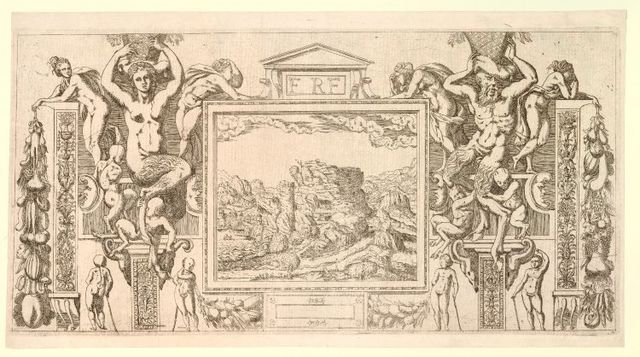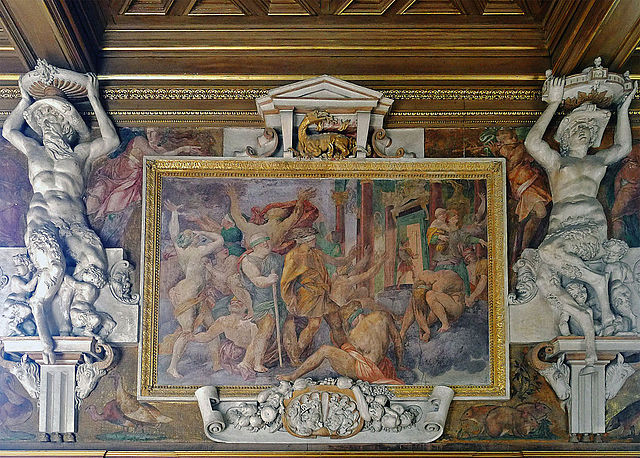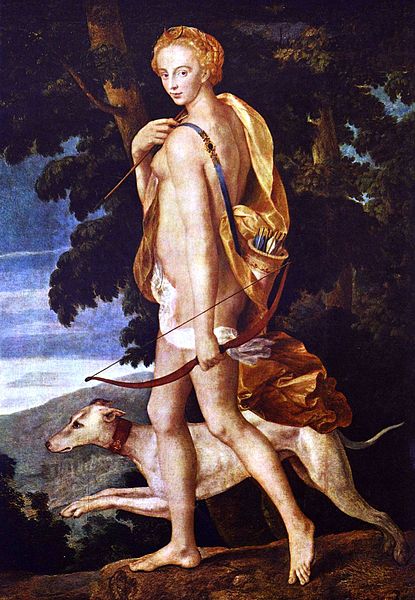The School of Fontainbleau refers to two periods of artistic production in France during the late French Renaissance centered on the royal Palace of Fontainebleau that were crucial in forming Northern Mannerism, and represent the first major production of Italian Mannerist art in France.
Diana the Huntress - School of Fontainebleau, 1550–1560, (Louvre)
Etching by Antonio Fantuzzi, copying a drawing for this stucco and paint surround at the Palace of Fontainebleau
The Enlightenment of Francois I by Rosso Fiorentino, and its surround in the Gallery of Francois I in the palace. A preparatory drawing is copied in the print above.
Portrait of Gabrielle d'Estrées and Duchess of Villars, School of Fontainebleau, c.1594
The French Renaissance was the cultural and artistic movement in France between the 15th and early 17th centuries. The period is associated with the pan-European Renaissance, a word first used by the French historian Jules Michelet to define the artistic and cultural "rebirth" of Europe.
Francis I of France, by Jean and François Clouet (c. 1535, oil on panel) (Louvre).
Eve, First Pandora by Jean Cousin the Elder (c. 1550).
Ligier Richier, Lamentation of Christ, Church of St. Étienne, Saint-Mihiel
Diane the Huntress, School of Fontainebleau (1550–60) (Louvre).








